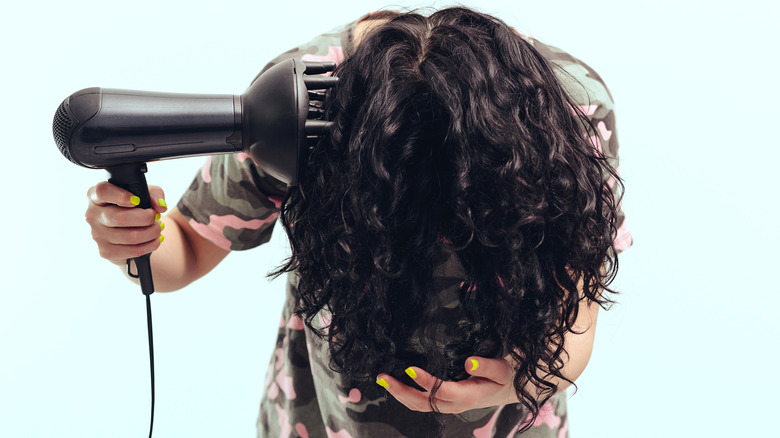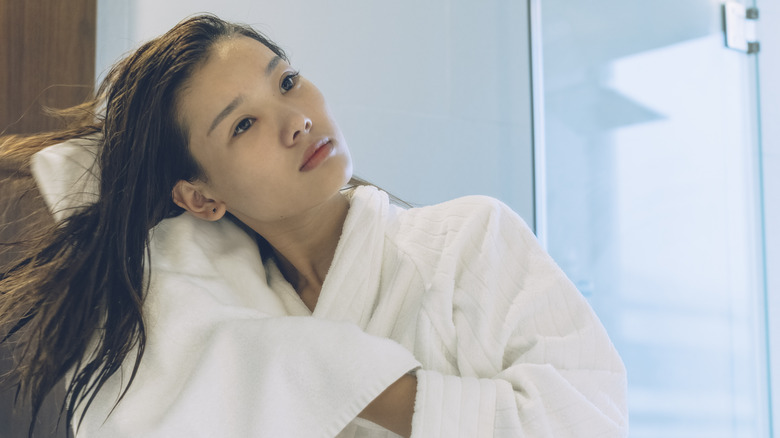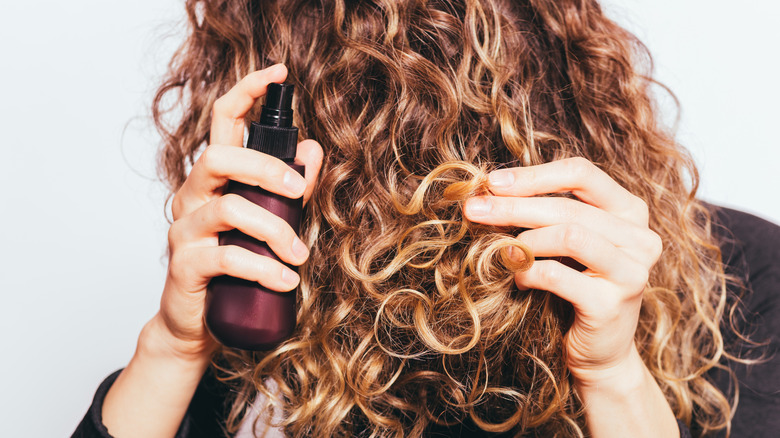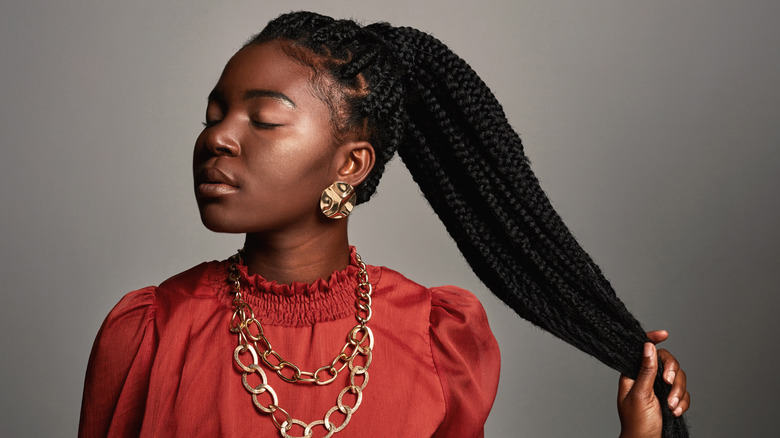Hair Recovery Tips That'll Bring Your Strands Back To Life
Many of us can relate to having unhealthy hair practices, whether we dyed it one too many times, continued to use heat on it when it probably wasn't a good idea, or weighed it down with hair products. Nonetheless, we may continue to keep up these hair behaviors in the name of beauty until the stress on our hair begins to show. Either we know first hand or have heard of the horror that comes with the realization our curls have gone limp, our straight hair looks dry and brittle, or our hair starts to thin out. But this reality check is almost certain to compel most of us to begin practicing better hair care.
If you're looking to recover unhealthy hair, it can be done but it's a process. When hair is damaged, the hair shaft, also known as the outer cuticle, is altered and weakened (via Healthline). And this places your hair at more risk for damage without proper care. So the key to recovery, and preventing future damage, is to take steps to nourish your hair, restore the strands, and return your hair to its former vitality. Here are some ways to do this.
Give your hair a break from heat and chemicals
When you're used to wearing your hair a certain way or are invested in good hair days, taking a break from styling tools that stress your hair may be easier said than done. We tend to rely on straighteners, hair dyes, and flat irons to get our hair the way we want; but they weaken the hair over time. Thus, it helps to give your hair a rest. And by rest, we mean, abstaining from these practices for more than one day. In fact, celebrity hairstylist, Millie Morales tells Well+Good, "...you'll want to commit to at least a month away from heat styling" if you want your hair to reach "peak hair health." If you can't commit to a month, on TikTok professional hairstylist Matt Newman recommends designating a regular "recovery" day between blowouts (via MBG). That is, a designated day to avoid heat styles and styling products.
But if you must use heat, there are ways to use less of it. For instance, you can use a blow dryer without the comb, and blow it dry from a distance. For ear-length hair or longer, you can go under the dryer with an old school roller set. It's healthier for your hair, and gives it more body and bounce.
Pamper your hair with conditioners
If you've ever tried to shampoo your hair without using conditioner, you know how brittle your hair feels without it. So if your hair is not in the best condition, regular conditioners with each wash help you to detangle your hair, moisturize it, and give it softness and luster. You'll also want to include deep conditioners in your routine. While regular conditioners work to heal the exterior part of the strand, deep ones stay on your hair for a longer time (typically under the dryer), and nourish the inside of the strand (via Holy Curls). Some hair professionals recommend weekly deep conditioners, and others recommend using it monthly, so how often you use it will depend on the condition of your hair. It's best to ask your hairstylist for your unique hair needs.
Another type of conditioner that replenishes the hair is a hair mask. Like deep conditioners, hair masks moisturize and strengthen the hair. However, masks penetrate even deeper into the layers of the hair strand; and can be applied to the scalp to stimulate hair growth (via Be Beautiful). Hair professionals have recommended using hair masks as frequently as multiple times a week; but similar to deep conditioners, you'll want to consult your hairstylist about what's best for your particular hair type.
Choose hair-friendly styles
Hair-friendly refers to hairstyles that are easy on your strands. For some, this may constitute protective styles like braids that allow the hair to have a break from chemical processes and everyday wear-and-tear. For others, this may be putting your hair back in a ponytail or bun to avoid having to use harsh styling products such as gels and hairsprays. Still others may decide to wear wigs as a way to make haircare and their morning routine easier. However, make sure you are well-informed, preferably by a professional hairstylist, about the cons of wearing wigs too often.
If these styles feel too restricting, or are not for you, challenge yourself to style your hair in ways that don't require heat or chemicals. This can include wearing your hair in its most natural form; using curlers at night instead of a curling iron; or using natural oils like olive or Mongongo oil as styling products. Notably, Mongongo oil is known to form a protective barrier on the hair that helps to lock moisture in, restore damage, and increase your hair's natural bounce.



